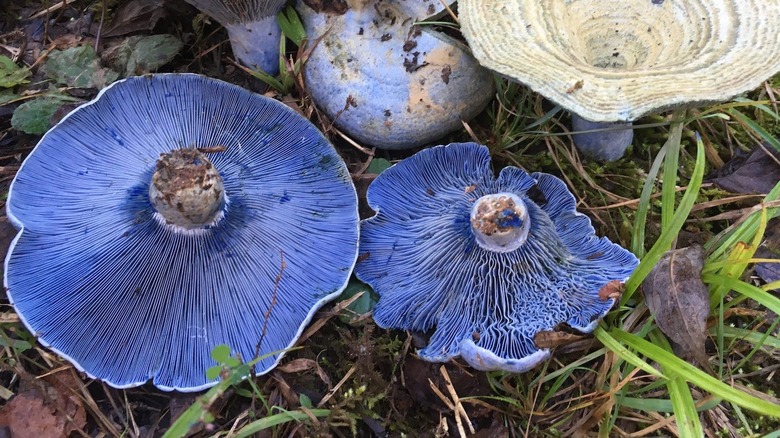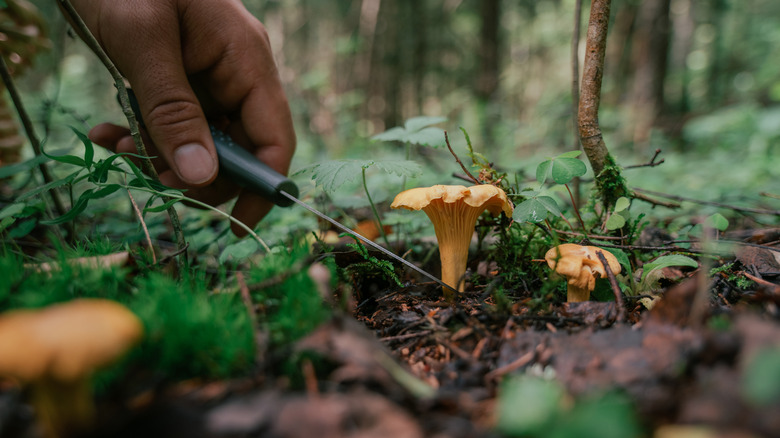What Does A Blue Bruise On A Mushroom Mean?
Of the many ingredients in the wide world, few are as strangely fascinating and hotly contested as the mysterious mushroom. Whether tearing friend groups apart as a pizza topping, poisoning the inexperienced survivalist, or bleeding blue ooze like an alien, these foreign seeming foods awaken the exploratory biologist in all of us.
Before unpacking the specifically smurf-like qualities of certain mushrooms, we need to first understand some of the basics behind them. According to Mushly, two ways a mushroom is identified are through bruising and bleeding. Bruising is done by notching small cuts along the top and bottom of a mushroom cap and observing any color changes both on the outside and the inside of the mushroom. As the cell walls are cut and broken, the insides of the mushroom — sections that are not normally exposed to open air — begin to interact with the oxygen and can sometimes cause a vibrant reaction. Bleeding refers to when mushrooms are cut and exude a milky substance; the mushrooms that do this have been dubbed "milky caps."
What makes mushrooms go blue is completely different for different species of fungi, so you need to know what you're looking at before eating, explains Mushroom Appreciation.
Many believe blue bruisers are hallucinogenic
As far as what a blue bruise could mean, it all depends on the type of mushroom. One of the more well-known is the psychedelic properties of some of these blue bruisers. Several types of psilocybin fungi, or magic mushrooms, have been observed to bruise blue. According to Mushroom Appreciation this popularized niche fact has led some to believe that all mushrooms that bruise blue are psychedelic and/or are edible, but this is not true. Poisonous bolete mushrooms, for instance, are a dangerous example of blue bruisers that cause a bellyache or worse.
Not all fungi-related recreation will land you in legal trouble; foraging for mushrooms both as a fun adventure and to supplement a dining table is a wonderfully invigorating experience, and it becomes even more so the stranger the mushroom specimens you find. It should be noted that all reputable sources including The New York Times and Mushly impress that identifying fungi solely through bruising and bleeding is dangerous and irresponsible.
If done safely you may find some of the most vibrant biological blue's this planet has to offer. DoubleBlindMag colors several different kinds of blue bruising mushrooms, but shines a spotlight on the edible lactarius indigo. A beautifully capped mushroom that bleeds a deep dark vibrant blue-purple color, bearing the common name Indigo Milk Cap. Armed with a reputable guidebook, you'll be able to differentiate these tasty blue treats from potentially dangerous ones.

